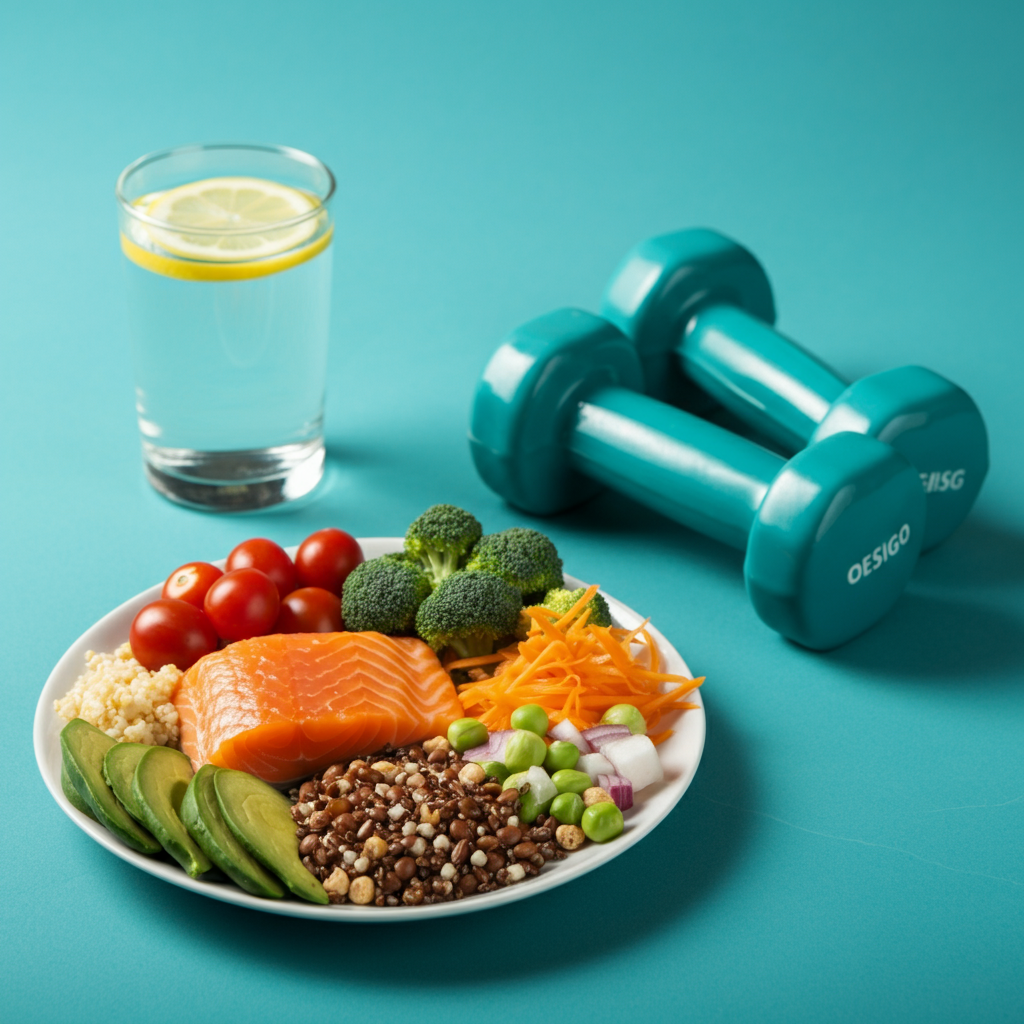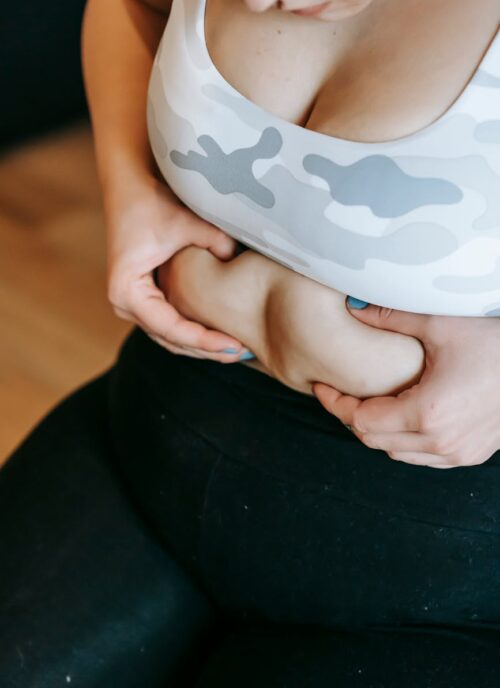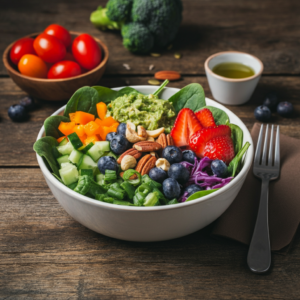As women age, weight loss can seem more challenging than ever, especially after hitting 40. Hormonal changes, a slower metabolism, and increasing risks for conditions like high cholesterol and high blood pressure all contribute to this uphill battle. But with the right lifestyle adjustments, you can achieve long-term health and fitness goals. Here’s how to approach weight loss while taking charge of your heart health.
Understanding the Challenges of Weight Loss After 40
After 40, your metabolism naturally slows down, meaning you burn fewer calories at rest than you did in your 20s and 30s. Additionally, hormonal shifts—especially during perimenopause and menopause—can increase belly fat storage. Muscle mass also decreases as you age, and since muscle burns more calories than fat, this contributes further to a sluggish calorie burn rate. Add stress and poor sleep to the mix, and the odds can feel stacked against you.
But don’t worry! While these challenges are real, they are not insurmountable. Adopting the right habits can help you drop pounds and improve health markers like cholesterol and blood pressure.
Key Lifestyle Changes for Weight Loss and Heart Health
1. Make Nutrition Your Foundation
- What to Eat:
Include foods that are nutrient-dense, heart-healthy, and low in calories yet high in fiber and protein. Focus on lean proteins like chicken, turkey, fish, and plant-based proteins (lentils, chickpeas, tofu). Add heart-healthy fats such as olive oil, avocados, and nuts in moderation. Load up your plate with leafy greens, cruciferous vegetables (broccoli, kale, cauliflower), and whole grains like quinoa or brown rice for sustained energy. - What to Avoid:
Steer clear of processed foods, which are often packed with trans fats, refined sugars, and sodium. Avoid sugary drinks, baked goods, and packaged snacks that spike blood sugar and contribute to weight gain. Cut back on salty foods like chips, canned soups, and processed meats, which can raise blood pressure.
2. Practice Portion Control
Even healthy foods can cause weight gain if consumed in large quantities. Use smaller plates, measure portions, and eat slowly to give your body time to recognize when it’s full.
3. Get Active Every Day
Regular exercise is key for maintaining a healthy weight and improving cardiovascular health. Aim for at least 150 minutes of moderate aerobic activity each week, such as brisk walking, swimming, or cycling. Combine this with strength training exercises 2-3 times per week to build muscle mass, which can boost your metabolism.
4. Sleep Your Way to Success
Lack of sleep can lead to higher levels of the stress hormone cortisol, which promotes weight gain, especially around the belly area. Aim for 7-9 hours of quality sleep every night. Create a bedtime routine, limit screen time before bed, and try relaxation techniques like deep breathing.
5. Manage Stress Levels
Chronic stress can lead to overeating, especially cravings for high-calorie comfort foods. Incorporate stress-management techniques into your daily life, such as yoga, meditation, or journaling. Regular exercise can also work wonders for reducing stress hormones.
Heart-Friendly Foods to Lower Cholesterol and Blood Pressure
Foods to Include:
- Leafy Greens: Spinach, kale, Swiss chard – high in potassium and fiber for blood pressure control.
- Oats and Barley: Rich in beta-glucans, these whole grains help reduce “bad” LDL cholesterol.
- Fatty Fish: Salmon, mackerel, and sardines are full of omega-3 fatty acids, which improve heart health.
- Berries: Blueberries, strawberries, and raspberries are high in antioxidants and can help lower cholesterol.
- Nuts and Seeds: Almonds, walnuts, flaxseeds, and chia seeds provide healthy fats and fiber.
- Legumes: Beans, lentils, and chickpeas are excellent plant-based protein sources that lower cholesterol.
Foods to Avoid:
- Trans Fats: Found in fried foods, margarine, and many baked goods – these raise LDL levels and lower “good” HDL cholesterol.
- Excessive Sodium: Avoid pre-packaged snacks, canned soups, and sauces that can contribute to high blood pressure.
- Added Sugars: Sodas, cookies, and candies can lead to weight gain and blood sugar imbalances.
- Processed Meats: Such as bacon, sausage, and deli meats, which are linked to higher cholesterol and heart risks.
Tips for Staying Motivated
- Set Clear, Achievable Goals: Focus on small, actionable steps like eating one more serving of vegetables daily or walking an extra 10 minutes.
- Track Progress: Use a journal or app to track your meals, exercise, and progress toward lowering cholesterol and blood pressure.
- Celebrate Non-Scale Wins: Improved energy, better sleep, and healthier habits are victories too!
- Find Support: Connect with friends, family, or a weight-loss group for accountability and encouragement.
Sample 1-Day Meal Plan for Weight Loss and Heart Health
- Breakfast: Oats topped with blueberries, chia seeds, and a drizzle of honey. Serve with green tea.
- Snack: A handful of almonds and a sliced apple.
- Lunch: Grilled salmon salad with arugula, cherry tomatoes, cucumbers, olive oil, and lemon.
- Snack: Greek yogurt with walnuts and a sprinkle of cinnamon.
- Dinner: Grilled chicken breast with quinoa and steamed broccoli.
Losing weight after 40 might take a little extra effort, but it’s absolutely achievable. Prioritize heart-healthy choices, stay consistent with exercise, and be kind to yourself along the way. Every step taken toward better health is worth celebrating. You’ve got this!

Effective Strategies for Losing Weight After 40
Losing weight becomes more challenging as we age, and many individuals over 40 notice the scale creeping up despite their efforts. Whether you’re searching for tips on how to lose weight after 40 female, how to jumpstart weight loss after 40, or how to lose weight after 40 male, making targeted lifestyle changes can have profound effects. Of course, hormones play a significant role in weight management during this stage of life, so understanding the link between hormones and weight loss after 40 is key. By following the guidance below, you can take positive steps toward sustainable weight loss, tailored to your needs, naturally and effectively.
Why Is Weight Loss Harder After 40?
By the time you reach your 40s, your body undergoes numerous changes that affect your ability to shed weight. Hormonal shifts, a slowing metabolism, and a loss of muscle mass all contribute to the difficulty of dropping pounds. For women, menopause is a significant factor, while men may experience reduced testosterone levels. These changes affect your energy expenditure, fat storage, and cravings, but it’s important to remember that change is possible.
If you’re wondering how to lose weight after 40 naturally, the answers lie in adopting practical strategies that address both biological and lifestyle factors.
How to Jumpstart Weight Loss After 40
When focusing on how to jumpstart weight loss after 40, it’s essential to set realistic goals and develop a tailored plan. Instead of crash diets or extreme workouts, focus on sustainable habits that you can maintain in the long term. These five strategies are particularly effective to get started:
- Prioritize Protein
Protein helps preserve muscle mass while promoting satiety. Include lean sources like chicken, fish, tofu, or legumes at every meal. - Increase Your Activity Levels
Regular exercise is vital, but it doesn’t have to be intense. A mix of strength training and cardio can be effective for both men and women. For men, losing belly fat after 40 male often comes down to incorporating core-strengthening exercises alongside aerobic workouts. - Balance Your Hormones Naturally
Hormonal imbalances can severely affect weight management. For insights on hormones and weight loss after 40, focus on foods that support hormonal health, like healthy fats (avocados, olive oil), and reduce processed food intake. - Stay Hydrated
Often overlooked, hydration is key. Drinking at least 8 glasses of water daily can curb cravings and boost your metabolism. - Plan and Track Meals
Understanding portion sizes and making intentional food choices is especially important in your 40s. Keep a food diary or use an app to ensure you’re staying on track.
How to Lose Weight After 45 Female
For women wondering specifically how to lose weight after 45 female, the focus may need to shift due to ongoing hormonal changes post-menopause. Estrogen levels drop significantly in this phase, which can lead to abdominal weight gain. Here’s what can help women over 45 get back on track:
- Adopt the Best Diet for a 40-Year-Old Woman to Lose Weight
Following diets like the Mediterranean diet or a plant-based diet can help regulate weight naturally. These eating patterns emphasize whole foods, healthy fats, and lean proteins. - Reduce Stress for Hormonal Balance
Cortisol, the stress hormone, impacts weight gain, particularly around the belly. Practice mindfulness, yoga, or even daily walks to lower cortisol levels. - Strength Training Over Cardio
Strength training becomes increasingly important after 45 as it helps rebuild muscle mass that declines with age.
Taking small daily steps to prioritize your health is key to consistent results.
Tailored Tips for Men Over 40
Men especially want to know how to lose weight after 40 male and manage areas like abdominal fat. A tailored approach that includes dietary changes and fitness can make a significant difference.
- Focus on Strength and Cardio
To tackle losing belly fat after 40 male, engage in a combination of weightlifting, HIIT (High-Intensity Interval Training), and endurance exercises like cycling or swimming. - Monitor Caloric Intake
Men generally need more calories than women but should carefully monitor intake to avoid consuming empty calories from alcohol or sugary snacks. - Boost Testosterone Levels Naturally
Foods rich in zinc, like shellfish and beans, can support testosterone production, which is crucial for boosting metabolism and fat loss.
By targeting these specific factors, weight loss can become more accessible for men over 40.
The Role of Hormones in Weight Loss After 40
A key factor in losing weight after 40 naturally is addressing hormonal changes. Hormones like insulin, estrogen, testosterone, and cortisol can all influence weight gain. Here’s how you can support balanced hormones:
- Insulin Sensitivity
Reduce refined carbs and sugars to stabilize blood sugar levels, an important step in controlling insulin resistance common in older adults. - Estrogen Decline
Women may benefit from phytoestrogen-rich foods like soy products or flaxseeds to counteract the effects of estrogen loss. - Boost Testosterone in Men
Engaging in resistance training and eating high-quality protein can naturally increase testosterone levels for men.
Understanding these links between hormones and weight loss after 40 ensures a well-rounded, effective plan.
Actionable Lifestyle Tips
If you’re thinking how to lose weight after 40 naturally, consider making small but impactful lifestyle changes. These include:
- Improve Sleep Quality
Poor sleep disrupts hunger hormones, making it harder to lose weight. Aim for 7-8 hours of quality sleep each night. - Manage Stress
Chronic stress leads to elevated cortisol, which encourages fat storage, especially around the belly. Make stress reduction a priority. - Stay Consistent
No strategy works overnight. A consistent, balanced approach will yield the most sustainable results.
A Balanced Diet Is Essential
For women asking about the best diet for a 40-year-old woman to lose weight, the focus should be on balance rather than restriction. Key elements include:
- Lean Proteins
Examples include chicken, fish, or plant-based alternatives, which keep you full. - Healthy Fats
Include avocado, olive oil, and nuts to support hormonal health. - Complex Carbs
Swap refined carbs for whole grains, quinoa, and sweet potatoes for long-lasting energy.
By prioritizing these components, both men and women can make healthy and sustainable choices.
Final Thoughts on Losing Weight After 40
Losing weight after 40, whether you’re male or female, requires a combination of smart dietary choices, regular physical activity, and attention to hormonal health. Whether you’re focused on how to lose weight after 40 naturally, how to lose weight after 45 female, or losing belly fat after 40 male, the strategies shared above can help you achieve sustainable and meaningful results.
Important Disclaimer
The information in this blog is for educational purposes only and is not a substitute for professional medical advice, diagnosis, or treatment. These insights were composed based on general recommendations from medical professionals but are not tailored to individual circumstances. We strongly encourage you to consult with your healthcare provider to address your specific health needs. We are not liable for any actions taken based on this content. Always seek personalized advice from your doctor or a qualified medical professiona

Your Online Personal Shopper + Stylist





Leave a Reply
You must be logged in to post a comment.